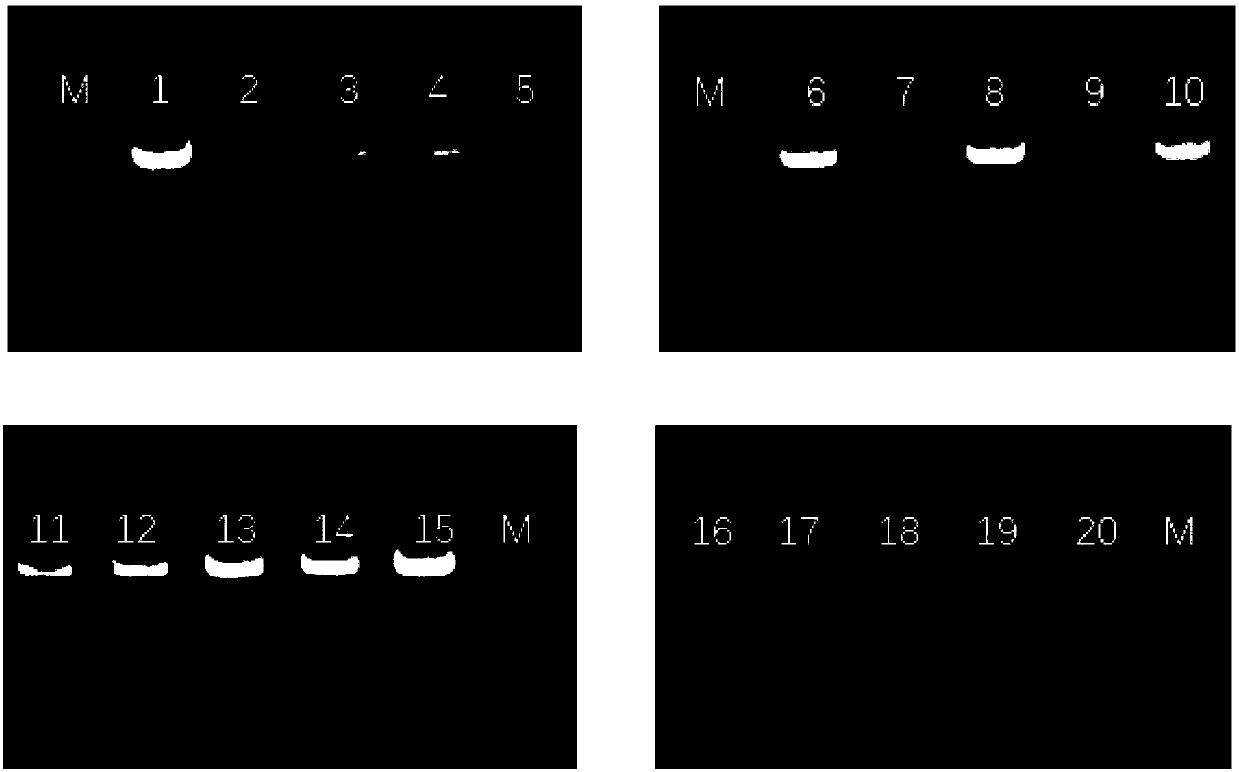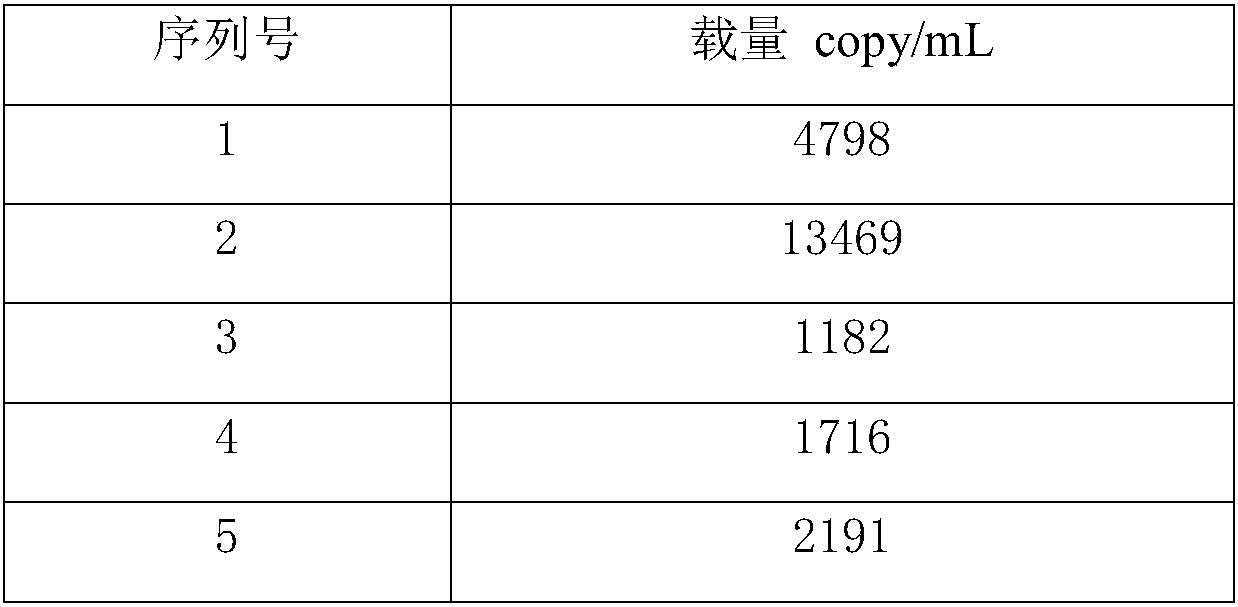Complete set primer for detecting HIV-1 drug-resistant mutation site and its application
A drug-resistant mutation site, HIV-1 technology, applied in the determination/inspection of microorganisms, biochemical equipment and methods, DNA/RNA fragments, etc., can solve problems such as the inability to cover drug-resistant mutation sites and achieve specificity Excellent, reduce the probability of pollution, reduce the effect of work intensity
- Summary
- Abstract
- Description
- Claims
- Application Information
AI Technical Summary
Problems solved by technology
Method used
Image
Examples
Embodiment 1
[0041] This example is used to illustrate the amplification primers used to amplify the Pol gene protease and reverse transcriptase gene fragments of the HIV-1 genome.
[0042] This example downloads the full-length genome sequence of HIV-1 virus worldwide from the AIDS sequence database (https: / / www.hiv.lanl.gov / content / sequence / HIV / mainpage.html), and uses sequence analysis software to Refer to the 2016 HIV-1 sequence outline to select the gene sequences upstream and downstream of the pol gene. According to the "Guidelines for Technical Review of Clinical Research Registration of Human Immunodeficiency Virus Detection Reagents" promulgated by the China Food and Drug Administration on May 17, 2013, the HIV prevalent in China is mainly HIV-1 of the M group (there is no N in the country yet. The reports of HIV-1 in group and O group, the reports of HIV-2 infection cases are rare), and its genotypes are mainly B / B', BC recombinant type (including CRF 07_BC recombinant type and C...
Embodiment 2
[0051] This example is used to illustrate the amplification of the Pol gene region of HIV-1 and the detection of drug resistance mutation sites.
[0052] 1. Extraction of RNA
[0053] Use Qiagen Spin Column Method Viral RNA Extraction Kit (purchased from Qiagen Enterprise Management (Shanghai) Co., Ltd., Cat. No. 52904) to extract HIV-1 RNA from the serum or plasma of HIV-1 patients. The specific steps are as follows:
[0054] 1. Take a centrifuge tube and add 560 μL of lysis buffer;
[0055] 2. Add 140 μL plasma, shake and mix for 15 seconds;
[0056] 3. Incubate at room temperature for 10 minutes;
[0057] 4. Briefly centrifuge to collect the liquid on the wall of the centrifuge tube to the bottom;
[0058] 5. Add 560 μL of absolute ethanol, shake and mix for 15 seconds; then centrifuge briefly to collect the liquid at the bottom of the centrifuge tube;
[0059] 6. Carefully suck out 630 μL of the solution from step 5 and add it to the QIAamp small spin column, cover the...
Embodiment 3
[0090] The present embodiment is used to illustrate the amplification primers of the Pol gene protease and the reverse transcriptase gene fragment for amplifying the HIV-1 genome of the present invention for the amplification detection situation of different subtypes.
[0091] The RNA of HIV-1 virus was extracted from samples of 20 cases (see Table 2) with different subtypes, and the amplification situation and drug resistance mutation site information of different subtypes were checked.
[0092] The RNA extraction and RT-PCR amplification methods of HIV-1 virus are as shown in Example 2, and will not be repeated here.
[0093] After electrophoresis detection (see Example 2 for the method), it was found that samples 1-20 could amplify DNA bands of about 2000 bp, and the amplified fragments were sequenced by the Sanger method and found that the sequence length was 1977 bp. 1, all fragments are sequences between 1822-3798 of the HIV-1 genome, and this region completely covers th...
PUM
 Login to View More
Login to View More Abstract
Description
Claims
Application Information
 Login to View More
Login to View More - R&D
- Intellectual Property
- Life Sciences
- Materials
- Tech Scout
- Unparalleled Data Quality
- Higher Quality Content
- 60% Fewer Hallucinations
Browse by: Latest US Patents, China's latest patents, Technical Efficacy Thesaurus, Application Domain, Technology Topic, Popular Technical Reports.
© 2025 PatSnap. All rights reserved.Legal|Privacy policy|Modern Slavery Act Transparency Statement|Sitemap|About US| Contact US: help@patsnap.com



